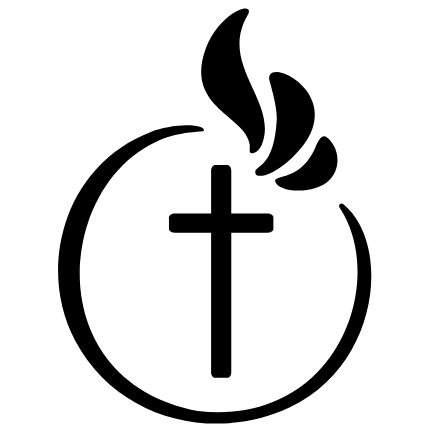
Pastor’s Corner
November 2025
Strip Off Your ‘Weight’ – Hebrews 12:1-2
I retired from the Army after 24 years of service. Maintaining physical fitness and taking the annual Army Physical Fitness Test were key parts of being a soldier. Both personally and professionally, I have long enjoyed the following verse:
Therefore, since we are surrounded by such a huge crowd of witnesses to the life of faith, let us strip off every weight that slows us down, especially the sin that so easily trips us up. And let us run with endurance the race God has set before us. Hebrews 12:1
God’s desire is for you and me to be as free as possible from ANYTHING that weighs us down from living the Christian life that best serves others and glorifies him. This scripture reminds us that we are to ‘strip off’ anything that might get in our way or ‘tangle us up.’
Any competitor in an endurance event will tell you: be as light as possible. A marathon runner would not wear a sweatshirt. A bicyclist would pick the lightest bike. A mountain climber on a multi-day climb would carry only essential gear.
In the same token, Paul encourages us to strip away anything that might prevent us from an abundant life (John 10:10)– including and especially our sin. But it could be other things or habits – an addiction, emotional eating, wrong thinking habits, lies of Satan, false guilt or shame, worry, bitterness, insecurity. These and other ‘weights’ can affect our testimony, hinder our spiritual growth, and can also adversely impact our relationship with God, ourselves, and others. In verse two, Paul tells us how we do this:
We do this by keeping our eyes on Jesus, the champion who initiates and perfects our faith. Because of the joy awaiting him, he endured the cross, disregarding its shame. Now he is seated in the place of honor beside God’s throne. Hebrews 12:2
God does not want us to try this ‘stripping off’ in our own strength. Instead, He wants us to focus on His Son and live by the power of the Holy Spirit within us. This focus underpins running and finishing life’s race well, as well as breaking free from the sin that entangles us. When we keep our eyes on Jesus and live by the power of the Holy Spirit, we won’t grow weary or become discouraged. We will persevere. We become, with Jesus, more than we can be on our own!
And this is not for our own sake. Later in this 12th chapter, Paul encourages us to ‘strengthen our feeble arms and weak knees‘ (vs 12) so that ‘the lame may not be disabled but healed’ (vs 13). As we grow healthier in mind, body, and spirit, we are better equipped to impact others. This growth strengthens our witness and creates more chances to live lives that attract. As a result, we’re more likely to give our time and talents to those in need—especially those who are spiritually sick and longing for the love, grace, and mercy of a powerful, personal God.
You see, God wants to use you in the most powerful way possible. He knows that if you’re carrying around extra ‘junk’ or ‘stuff,’ it will hinder you from being as useful as possible in your service to others and to Him. So, if you’re serious about your relationship with God and want to be used by Him in an even greater way, I encourage you to get on your knees, open your heart, and humbly ask Him, “God, what ‘weight’ do you want to strip from me?”
If you truly want to be light, God will show you your extra ‘weight,’ and His Son will remove it!
Pastor Doug
October 2025
Hope in a Broken World
“The Lord isn’t slow to do what he promised, as some people think. Rather, he is patient for your sake. He doesn’t want to destroy anyone but wants all people to have an opportunity to turn to him and change the way they think and act.” 2 Peter 3:9 (GW)
When God looks down on the earth and sees so much sin in the world, why does he put up with it? He’s got the power to shut it all down. So, why is he allowing a broken planet to continue limping along?
Because although the world’s broken, God is still in control—and history is moving toward a climax. History is his story, and he’s not finished yet.
The Bible says in 2 Peter 3:9, “The Lord isn’t slow to do what he promised, as some people think. Rather, he is patient for your sake. He doesn’t want to destroy anyone but wants all people to have an opportunity to turn to him and change the way they think and act” (GW).
God is patiently enduring all the grief that he sees on this planet. Why? Because he’s waiting for people to step across the line and follow Jesus as their Savior and Lord. He wants all people to become part of his family—that includes you!
And if you’re in his family, he wants you to share the Good News of Jesus with everyone you know, because he wants them to be part of his family too. God is waiting so that more people have the opportunity to receive his grace.
Many people say, “I can’t believe in a God who would callously stand by, unmoved, and watch children suffer.” I don’t believe in that kind of God either!
I believe in a God who weeps when He sees the people He created hurting one another. And I believe in a God who is one day going to stop evil dead in its tracks and settle the score. The Bible says there’s going to be a day when God judges all sin and evil.
But here’s the good news: If you’ve accepted Jesus as your Savior, you don’t need to fear that day. The Bible says, “There is no condemnation for those who belong to Christ Jesus” (Romans 8:1 NLT). That means when you stand before God, you won’t stand there alone or ashamed. You’ll stand in his grace—totally forgiven, because of what Jesus has already done for you on the cross.
Yes, the world is broken, and yes, there’s evil—but God is in control. He’s still got the whole world in his hands. And he’s giving us a little more time to choose him and to tell others about his love for them.
What are you waiting for?
Talk It Over
- Do you feel a sense of urgency to tell people about the gospel? Why or why not?
- If you knew Jesus was going to return to earth tomorrow, who would you share the Good News with today?
-How can we know what God feels when he looks at the world?
Are you ready to step across the line and follow Jesus as your Savior and Lord?
If you’ve never invited Jesus into your heart, I want to offer you that opportunity now. Tell God you trust his promise of salvation through Jesus by praying this prayer: “Dear heavenly Father, I confess that I have sinned against you, and I ask for your forgiveness. Thank you for your promise that, through the death and resurrection of Jesus Christ, there is no condemnation for those who are in him—and that through him, my guilt is taken away. “I believe in Jesus and accept him as my Savior and Lord. I give my life to you completely, trusting in your grace and love. Thank you for saving me and making me new. Help me to follow Jesus every day. In Jesus’ name, Amen.”
Pastor Doug

